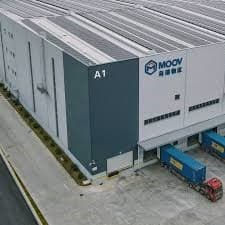Recently, the need for supply chain management has boomed, and Warehousing Transport has become an important part of ensuring the success of logistics. It is only with the help of such transport that the efficient movement of goods from the manufacturer to the end consumer can be confirmed. This field integrates several activities that include storage, handling, and distribution at both the warehouse and intermodal levels. Therefore, with growing interest among businesses in the field of Supply Chain Optimization, the need to understand both favorable and unfavorable conditions associated with warehousing electronic transport becomes crucial to making an informed decision while striving to balance efficiency with cost and quality of service.

Advantages of Warehousing Transport
- Better Inventory Management
Warehousing transport presents an organization with the opportunity to handle its stock even more effectively. Storage of goods in the warehouse can therefore be used to buffer stock for the firm to ensure that, upon the occurrence of such cases, an organization can meet the demand of its customers. In this regard, this approach helps organizations to iron out fluctuations in demand and supply to prevent the risk of stockout and overstock situations.
Advanced WMS further extends inventory control through real-time stock levels, status updates of orders, and specific warehouse movements. Further, such information allows business decisions regarding re-ordering, order completion, and suitable inventory distribution.
- Improved Order Fulfillment
The reason is, that with the efficient transportation of warehousing electronic transport, the fulfillment of orders will be not only faster but also accurate. Modern-day warehouses are equipped with technology that speeds up the picking, packing, and shipping processes. This leads to better customer satisfaction since it ensures orders are quickly and correctly processed, hence shorter lead times and less error occurrence.
Besides, strategically located warehouses near major transportation hubs or customer centers reduce transit times and, hence, delivery time, enhancing responsiveness towards customer demand.
- Flexibility and Scalability
It provides warehousing transportation flexibility and scalability, two of the most important factors on which any company relies to work properly in case of fluctuating demand or seasonal variation. Companies can adjust the storage areas and resources according to their existing requirements and scale up or down accordingly. It makes it possible for businesses to respond quickly to market changes while optimizing their operations without being locked into fixed costs.
Further to this, most third-party logistic providers do provide customized warehousing services to suit particular business needs or demands, thus enabling an organization to dedicate itself to its core work and outsource the logistical functions.
Disadvantages of Warehousing Transportation
- High Operation Cost
While warehousing can result in economies of some kinds, warehousing is also extremely expensive. Maintaining a warehouse facility encompasses such costs as facility management, staffing, utilities, and equipment. This can be quite expensive, especially for those businesses that maintain large or specialized warehouses.
Further, the investment in technology and automation systems, though it pays in the long run, requires a great deal of capital outlay in the initial period. For small business ventures, this cost may become the bottleneck in the use of higher technologies in warehousing solutions.
- Space Utilization and Capacity Constraints
The other important aspect of warehousing transport is the efficiency in space utilization. Poor management of space leads to inefficiency. Overcrowding and underutilization of the warehouse space influence the operational aspects and cost the business more. Thus, businesses have to make plans very carefully for warehouse layout and a strategy of storage to ensure efficiency in the utilization of space.
Capacity can also be a limitation, particularly in the very fast-growing businesses and those organizations that are most affected by seasonality. Warehouses have limited capacities that may not accommodate increases in inventory, creating the potential for delays and logistical nightmares.
- Environmental Impact
Then comes environmental problems associated with transportation in warehousing, mainly concerning energy and waste. Warehouses in many ways demand a good deal of energy: lighting, heating, cooling, and operating machinery. Sometimes packaging materials and waste that occur during the process add to the environmental problems.
Companies should plan for sustainable practices that involve energy-efficient lighting, waste reduction programs, and eco-friendly packaging, amongst many others. This will reduce environmental impact and keep up with the increasing consumer demand and regulatory drive towards greener practices.
The Bottom Line
Consideration of these pros and cons must therefore be a careful one as businesses negotiate this changing logistics environment. Advanced technologies, optimization of warehouse operations, and sustainable practices employed in supply chains mean that companies have considerable scope to maximize the benefits of warehousing transport while coping with the associated challenges. By so doing, they can create more efficient, responsive, and resilient supply chains, which are oriented toward meeting today’s dynamic market. However, to mention further, to have the best services in terms of electronic transport, you can always contact Moov Logistics.
